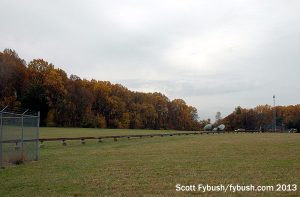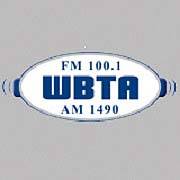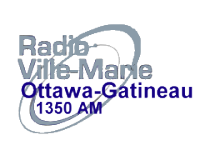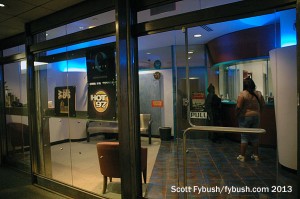NorthEast Radio Watch 12/8/2025: Cichon’s Back in Buffalo
In this week’s issue… Veteran newsman returns - Remembering NY's Leitner, RI's Jones - CT AM saved - Maine AM moves - "Indie" adds suburban signals
In this week’s issue… Who’s sitting on valuable transmitter real estate? – “Bull” upgrade complete – Ottawa AM, Sun News silenced – Remembering Richard Sher – Classic country in Maine
By SCOTT FYBUSH
It’s calendar time!
The 2016 edition is due to come back from the printer in just a few days, and it’s ready for you to order!
But until the printer actually hands it over, we’re offering both the regular and limited editions at a discount price, and one lucky winner might get a calendar for free.
Go to the bottom of the column for details.
Please contact Lisa with any questions.
*It’s been a rather slow news week across NERW-land, probably because all across the region most of us are consumed with staying warm and clearing the record snowfalls that have paralyzed us everywhere from Calais to Buffalo. It’s amazing, in fact, that we’ve heard no reports of towers down or even stations off the air due to tower loss or power failures.
But while the ground at tower sites all over the region sits hidden beneath thick blankets of snow and ice, tower-site land is in the headlines this week in a big way, thanks to Cumulus and its decision to put the 75 acres of land at Washington, D.C.’s WMAL (630) up for sale.

As we noted in last Friday’s Site of the Week, that prime land in Montgomery County, Maryland is likely the single most valuable piece of real estate in American radio; at an estimated $150 million, it’s probably worth close to ten times what the station itself is worth these days. The plan to sell WMAL’s land (offers are due in early March) comes on the heels of last year’s sale of the land under Cumulus’ KABC (790) in a part of west L.A. that’s become a hot commercial development zone.
We can’t answer the biggest pressing question – where will WMAL move? – at least not yet. But we can pass along something we overheard a couple of years back at a NAB Show gathering, when at least one prominent AM consultant noted that he’d been asked to find relocation opportunities for “several” big-market signals. In hindsight, we suspect KABC and WMAL were on that list…and that leads to the second-biggest pressing question: who might be next?
Let’s stipulate that a lot of AMs, even big-market ones, will simply never be under the same kind of development pressure that’s claimed KABC and WMAL. Many AM facilities were built in what amounted to swamps, and even if you could physically drain and fill them, today’s wetland laws might prevent that from happening. Some aren’t even on dry land at all: take, for instance, WMCA/WNYC’s patch of fine Jersey swamp beneath the Pulaski Skyway, or WBZ’s marshland at the edge of Hull, Massachusetts. And some sites with good development potential have already been sold off and developed, which is why stations such as WLAN in Lancaster, PA, WFBL in Syracuse and WHIC here in Rochester moved to less-favorable locations in recent years.
So with the very big caveat that as far as we know, none of these sites is actually for sale (or even 100% developable), here’s our list of the NERW-land sites that could end up on that dangerous list of “worth more for the land than for the station on it”:
[private]
WRKO, Burlington, MA: It’s rather low-lying, to be sure, but the big piece of land where this Entercom talk station’s three towers sit has gone from rural countryside in the 1940s to a bustling hub of commercial development a stone’s throw from the Burlington Mall. It’s hard to imagine where else the 50 kW 680 signal could possibly go if this site were to go away.
WEEI, Needham, MA: Another big three-tower site that’s been surrounded by development since being built in the 1940s, in this case subdivisions of homes worth half a million dollars or more. Entercom has examined the possibility of moving WEEI to the WRKO site in the past. On the other hand, the 850 site is landlocked, with access only through a neighboring gun club, and it’s surrounded by conservation land, so development might be a challenge here.
WAEI, Bangor, ME: Already gone, at least in theory – while Blueberry Broadcasting has been firing up the AM 910 signal from time to time to keep the license alive, it’s put that license up for sale without the two-tower site in Brewer, which sits on a busy stretch of Route 1A in Brewer just across the Penobscot River from downtown Bangor.
WPRO, East Providence, RI: Since Cumulus has been the most aggressive big owner thus far in selling off AM land, it makes sense to pay close attention to any site it owns in a busy commercial area like Wampanoag Trail in East Providence. WPRO could diplex with sister station WPRV (790), in a less desirable part of East Providence, but there’s the extra complication of a busy studio building out here that’s home to WPRO, WPRV and three FM sister stations.
WQOM/WAMG, Ashland, MA: Five towers on a big piece of land in another increasingly desirable MetroWest suburb – but with two stations diplexed (and paying rent) here, this site might be valuable enough as a broadcast facility to stay in use for a while longer. (The same is likely true, for now, of the somewhat smaller WSRO 650 site on the former WKOX property in nearby Framingham.)
WTIC, Hartford, CT: Hilltop land in the affluent Hartford suburb of Avon is a prime spot for residential development, to be sure. But owner CBS remains committed to AM radio, and WTIC remains solidly profitable, not to mention hard to relocate anywhere else. (And it’s not clear the WTIC site could be split up to break off the field where the two AM towers sit from the rest of the property that’s home to WTIC-FM and WFSB-TV.)
WCBS/WFAN, New York: Another tremendously desirable site – imagine the waterfront mansions you could build on one of the few private islands within New York City limits if the zoning allowed it! – but these are two of the most profitable AM stations anywhere in the country, so there’s no reason yet to think CBS Radio will hear the siren calls of developers who might covet this High Island location just off City Island in the Bronx.
WQEW, New York: While most of New York’s AM stations transmit from the swamps of Jersey in locations that couldn’t easily be developed even if anyone wanted to do so, Radio Disney’s WQEW is tucked inside an industrial property in Maspeth, Queens, on the Brooklyn line. When buyer Family Stations takes over, will it try to recoup some of its $13 million purchase price by seeking a diplex at one of the New Jersey AM sites, then selling off the Maspeth land to one of the neighboring warehouse owners?
WABC, New York: Cumulus again, which is why we have to at least ponder what could go on this large and fairly dry piece of land with easy access off a busy (if somewhat low-rent) stretch of Route 17 in Lodi, N.J. On the other hand, relocating a class A AM signal like WABC’s on 770 requires a tall tower, and there aren’t many good diplexing options in the neighborhood.
WFAS, Greenburgh, NY: And Cumulus again, this time in some very desirable suburban residential turf in the heart of Westchester County. For now, Cumulus appears to be making money by keeping WFAS (1230) and W232AL (94.3, the new “WFAS-FM” fed by an HD subchannel) on the tower and studios here.
KYW, Philadelphia: Another contender for “most valuable property” in the region, this big piece of land in Whitemarsh Township adjoins upscale homes and country clubs (and, incongruously, a big quarry across Joshua Road). It’s also home to another very profitable CBS station that would be hard to relocate, so again, this one is probably fairly safe for now.
WDDZ, Pittsburgh: The old WTAE/WTAE-FM was built on a shaved-off hilltop overlooking the Monongahela River in the South Hills, and over the years the AM and FM stations went to separate owners. Clear Channel/iHeart now has the land and the FM (today it’s WKST-FM 96.1), and it’s been collecting rent from Radio Disney for the AM (now WDDZ 1250, and now for sale). Could a buyer of WDDZ move elsewhere, freeing up one of the two towers here to be replaced by more residential development?
WHP, Harrisburg: One of the biggest pieces of transmitter land anywhere in the region, this huge six-tower site sits right next to I-81, albeit without direct highway access. And at least for now, land in this area west of Harrisburg isn’t desirable enough to make the property more valuable than the iHeart talker that sits on it.
Who else belongs on this list? Weigh in below in our comments section!
 *The last phase of the big iHeart FM shuffle in MASSACHUSETTS and RHODE ISLAND wrapped up early last Thursday morning, when a tower crew removed the parasitic elements on the WBWL (101.7 Lynn) antenna atop One Financial Center in downtown Boston. That simple move turned iHeart’s country “Bull” into a nondirectional signal with better coverage to the south, a move made possible by the downgrades of co-owned WWBB (101.5 Providence) and WCIB (101.9 Falmouth).
*The last phase of the big iHeart FM shuffle in MASSACHUSETTS and RHODE ISLAND wrapped up early last Thursday morning, when a tower crew removed the parasitic elements on the WBWL (101.7 Lynn) antenna atop One Financial Center in downtown Boston. That simple move turned iHeart’s country “Bull” into a nondirectional signal with better coverage to the south, a move made possible by the downgrades of co-owned WWBB (101.5 Providence) and WCIB (101.9 Falmouth).
Will it all be worth it in the end, especially the big power drop at WWBB, which is now just a class A facility? Early reports are that 101.7 is indeed a cleaner signal in south suburban Boston and MetroWest, but the real test will come over the next few ratings periods as we see whether WBWL’s added coverage can help it eat away at the ratings of much bigger country competitor WKLB (102.5).
*Over at CBS Radio, Marc Bertrand moves from afternoon update anchor to become midday co-host on WBZ-FM (98.5 the Sports Hub), where he replaces Andy Gresh alongside Scott Zolak on the 10-2 shift beginning tomorrow.
Mark down WREQ-LP as the new calls for Easton Community TV’s new LPFM on 96.5.
And we note with great sadness the death of Richard Sher, who created and hosted “Says You!,” the WGBH-produced quiz show that was stumping public radio listeners before “Wait, Wait Don’t Tell Me!” was a gleam in Carl Kasell’s eye. Based on the BBC’s “My Word,” “Says You!” started in 1996 and is now heard on some 100 public radio stations around the country. Sher had worked as a TV producer at WBZ-TV’s “Evening Magazine” and WCVB’s “Chronicle” before launching the show. Sher died Feb. 9 at age 66.
*Dennis Jackson is proposing a big move for an unbuilt CONNECTICUT translator. W279CI (103.7) is currently on the books as a 250-watt relay of WSHU-FM (91.1 Fairfield) serving Georgetown, but Jackson is now applying to slide it northward up Route 7 to Brushy Hill in Danbury, the WLAD (800)/WDAQ (98.3) site that’s also home to another fairly recent translator move-in on 107.3.
And WNHH-LP is the callsign for the Online Journalism Project’s new 103.5 in New Haven.
 *In central MAINE, Bob Bittner’s trying something new at his third AM station. WJYE (1280 Gardiner) had been carrying the same standards-AC “Memories” format as Bob uses at WJTO (730 Bath) and his original AM, WJIB (740 Cambridge-Boston), but it’s now flipped to classic country as “Country Memories 1280.”
*In central MAINE, Bob Bittner’s trying something new at his third AM station. WJYE (1280 Gardiner) had been carrying the same standards-AC “Memories” format as Bob uses at WJTO (730 Bath) and his original AM, WJIB (740 Cambridge-Boston), but it’s now flipped to classic country as “Country Memories 1280.”
“Presently, it’s playing 4,000 country hits from 1945 to 1995. Later, I plan to up that to 6,000 songs,” Bittner says. Listeners in southern Maine and Boston can get a taste of the format on Sunday mornings, when WJTO and WJIB carry “”Country Memories on Sunday Morning,” which inspired the format change at WJYE.
*In VERMONT, WRXJ-LP is the new callsign for St Francis Xavier Parish’s Burlington LPFM on 105.5, while WFVR-LP is the new call for Royalton Community Radio’s South Royalton LPFM on 96.5.
*The new community low-power FM signals coming to the greater Albany, NEW YORK area appear to be doing some coordinating behind the scenes, at least where callsigns are concerned. Four new LPFMs around Albany all have similar-sounding new calls: WOOA-LP (106.9 Albany), WOOC-LP (105.3 Troy), WOOG-LP (92.7 Troy) and WOOS-LP (95.9 Schenectady).
 Translators in the news: in Batavia, WBTA (1490) celebrated its 74th anniversary by turning on its new FM translator, W261CR (100.1), transmitting from the top of WBTA’s AM tower just south of town. In Watkins Glen, public radio WSKG has completed the move of its translator W215AB from 90.9 down the dial to 90.5, getting it out of the way of co-channel interference with WSKG’s more powerful Ithaca relay, WSQG, also on 90.9.
Translators in the news: in Batavia, WBTA (1490) celebrated its 74th anniversary by turning on its new FM translator, W261CR (100.1), transmitting from the top of WBTA’s AM tower just south of town. In Watkins Glen, public radio WSKG has completed the move of its translator W215AB from 90.9 down the dial to 90.5, getting it out of the way of co-channel interference with WSKG’s more powerful Ithaca relay, WSQG, also on 90.9.
Call changes in LPTV-land: WNDR-LP (Channel 49) and WBLZ-LP (Channel 13) in Syracuse have swapped calls, while WTKO-LP (Channel 15) in Oneida has become WCUL-LP.
An obituary from here in Rochester: Toby Gold was a familiar voice and face in the 1970s and 1980s on Rochester TV and radio, with stints at WROC-TV (Channel 8), WPXN (1280), WBBF (950), WHEC-TV (Channel 10) and WOKR (Channel 13). Gold later worked for the American Lung Association before retiring to Arizona, where he died Feb.5 of lung cancer at age 70.
*New LPFM calls in NEW JERSEY: mark down WUEY-LP on 103.9 in New Brunswick for The Wire NJ and WAMS-LP on 97.5 in Newton for Sussex Community College.
*A near-death PENNSYLVANIA AM is back on the air. WPDC (1600 Elizabethtown) returned to the air over the weekend with an oldies format, programmed by former WHYL (960 Carlisle) operator Bruce Collier.
In Martinsburg, WWBJ (1110) has returned to its former calls, WJSM.
And in the Pittsburgh suburbs, WWCS (540 Canonsburg) appears to be for sale as part of a listing of substantially all of Birach Broadcasting’s assets. That list also includes silent WKGE (850 Johnstown) and WTOR (770 Youngstown), which aims at Toronto from the south side of Lake Ontario in Niagara County, New York, as well as leased-time/ethnic stations in Detroit, Chicago, St. Louis, Washington and several other sizable markets.
*Corus was getting “Fresh” all across CANADA last week, installing that hot AC brand at additional signals that include CKWS (104.3 Kingston) and CKRU (100.5 Peterborough), both of which had been branding as “Hits.” Corus also tweaked “Fresh FM” to “Fresh Radio” at several existing “Fresh” stations, including CING (95.3 Hamilton) and CFHK (103.1 St. Thomas-London).
Back in Kingston, Corus sister station CFMK (96.3) also did some format shuffling last week, going from classic to current rock on what’s still known as “FM 96.”
In northern New Brunswick, French-language CJVA (810 Caraquet) has been granted permission to go from AM to FM. The new CJVA signal at 94.1 will run 17 kW average/28 kW max DA/65.7 m, adding additional hours of local programming to what’s now largely a simulcast of CKLE (92.9 Bathurst). When CJVA leaves the AM dial (after three months of simulcasting), it will leave just four remaining AMs in all of New Brunswick.
 *Even in parts of Canada where AM radio isn’t completely dead, it’s not always easy to keep an AM signal on the air. In Gatineau-Ottawa, CIRA-5 (1350) has signed off for good after going on and off the air several times in recent months. Radio Ville-Marie, which operated the French-language religious station as a relay of CIRA (91.3 Montreal), says the 1350 signal won’t be coming back after its latest outage.
*Even in parts of Canada where AM radio isn’t completely dead, it’s not always easy to keep an AM signal on the air. In Gatineau-Ottawa, CIRA-5 (1350) has signed off for good after going on and off the air several times in recent months. Radio Ville-Marie, which operated the French-language religious station as a relay of CIRA (91.3 Montreal), says the 1350 signal won’t be coming back after its latest outage.
“The Ottawa/Gatineau antenna has really been shut down,” Radio Ville-Marie tells Canadian Radio News, saying “the people in charge there not being able (or not giving enough effort) to raise enough money to keep the station there.”
Just west of Montreal, Evanov’s new “106.7 the Jewel” has hired a prominent new morning voice. Ted Bird is joining Hudson/St.-Lazare-based CHSV after what’s been a whirlwind five years: the Montreal Gazette‘s Steve Faguy notes that in that time, Bird has moved from his longtime home of CHOM (97.7) to CKRK (103.7 Kahnawahke) to CKGM (then on 990) , then to another First Nations-based signal, CKKI (89.9 Kahnawahke), which he departed on Feb. 6 to start his new job with Evanov. Bird will start at “The Jewel” on the station’s official launch date, March 2.
And we note the end of the Sun News Network early Friday morning, in part because the network started out as an over-the-air TV station, replacing the former “Sun TV” on CKXT (Channel 52) in Toronto. Quebecor, which bought CKXT from its founding owner, Craig Media, eventually surrendered the broadcast license (including transmitters in Hamilton, London and Ottawa) to go cable-only – but it was never able to get the coveted “category 1” license that would have given it mandatory carriage on low cable tiers nationwide.
[/private]

As we announced a few weeks ago, the 2026 edition of the Tower Site Calendar will be the last.
We began publishing it 25 years ago, and the broadcast landscape is radically different now.
Radio World just ran an excellent article about us if you want to know more.
Once it’s gone, that’s it. We won’t be printing any more.
Thank you to everyone who saw our announcement and rushed to buy it. We appreciate you.
(There are some calendars from previous years if you want more of a tower photo fix — all under $5.)
But don’t wait to get this year’s Tower Site Calendar — buy it now!
We are selling the Broadcast Historian’s Calendar again this year, but we have that in an even smaller quantity — definitely don’t hesitate for that.
And visit the Fybush Media Store to check out our selection of books and videos, too!
From the NERW ArchivesYup, we’ve been doing this a long time now, and so we’re digging back into the vaults for a look at what NERW was covering one, five, ten, fifteen and – where available – twenty years ago this week, or thereabouts. Note that the column appeared on an erratic schedule in its earliest years as “New England Radio Watch,” and didn’t go to a regular weekly schedule until 1997. One Year Ago: February 17, 2014 *We’re not much in the habit of making prognostications here about what lies ahead in each new year of covering the radio and TV industry. And it’s a good thing we’re not in the prediction business, because if we were, there’s no way we’d have pegged the start of 2014 as a time of record prices for big-market radio stations.  That surprise came to us from NEW YORK City, where Emmis’ $133 million deal to buy WBLS (107.5) and WLIB (1190) from YMF Media closes the circle on one of the oddest – and ultimately most profitable – ownership transfers in pretty much the entire history of American radio. Before we dig into the backstory of what makes this deal unusual, here are the basics: by adding WBLS, in particular, to its existing WQHT (97.1), Emmis will create a one-two punch of urban FM that will give it a dominant position with that chunk of the New York audience, competing only against Clear Channel’s WWPR (105.1) on the younger end and with essentially no competition for older African-American listeners. Even if that demographic is becoming a smaller part of New York’s radio landscape – and it is – the size of this deal shows that it’s still a valuable market segment. Consider, by way of comparison, the last two class B FM stations to change hands in the city: CBS paid $75 million in 2012 for what’s now WFAN-FM (101.9), while Cumulus paid $40 million for the somewhat lesser signal of what’s now WNSH (94.7 Newark). Those, of course, were stick-value deals, where the buyer was picking up only the license and transmitter, not an ongoing format or advertiser list. And so we have to go back one sale further to find a comparison, which brings us right back to Emmis and to the reasons this WBLS deal is so, so very interesting: Let’s rewind to April 2012, shall we, and the Thursday afternoon that set the radio industry abuzz. Emmis New York was then a two-FM cluster, having recently shed 101.9 to Merlin Media, and its remaining FMs were both squarely aimed at the urban audience: WQHT with younger-leaning hip-hop and WRKS (98.7) with an older-skewing R&B format that was rapidly shedding revenue. In a deal then valued at $96 million, Emmis spun off the intellectual property of WRKS to YMF, which brought some airstaff from 98.7 over to WBLS, created a new subsidiary to hold the 98.7 license, and entered a 12-year deal to lease the 98.7 signal to Disney to become the new FM home of ESPN Radio in New York.
The YMF piece of that 2012 deal turns out in retrospect to have been even more interesting than it seemed at the time. While widely reported as a “$10 million” sale of WRKS’ intellectual property, the numbers were even bigger: YMF also agreed to make quarterly payments to Emmis of 15% of any increase in revenue it reaped at WBLS (presumed to be the result of the elimination of competition from WRKS). And then, a few months later, the ties between YMF and Emmis got even deeper when YMF’s own budget problems forced WBLS and WLIB to move out of their expensive Park Avenue aerie. In need of a new home, and quickly, the YMF stations relocated downtown to the space at Emmis’ Hudson Street studios that had become available with the demise of WRKS. The result wasn’t quite a full-fledged LMA – YMF retained control of its stations under a separate general manager and programming staff, and even had its own separate receptionist sharing space with an Emmis employee at the front desk – but behind the scenes, Emmis quietly began providing some services to WLIB and WBLS that included engineering and IT support. (So quietly, in fact, that few trade publications ever picked up on that piece of the agreement…but that’s why you read NERW, right?) *Before Emmis and YMF reset the expectations game on the radio side with their New York deal, the other big station-sale headlines for the week were happening upstate (and around the country, too), where Granite announced a pair of deals that nearly take it out of the television business.
While the sale of WKBW was expected, the surprise came the next day, when Granite announced a second deal to unload most of its remaining stations to Quincy Newspapers, the small Illinois-based operator that’s known for its quality operation of TV outlets (and a few newspapers) in the lower rung of the market scale. Quincy’s only NERW-land presence until now has been the New Jersey Herald in Newton, N.J., but its deal with Granite now brings Binghamton’s WBNG (Channel 12) into the Quincy fold (along with stations in Fort Wayne, Duluth and Peoria). *Returning downstate, it’s a bad Monday morning for WKJY (98.3 Hempstead), albeit one of its own making. Connoisseur’s “K98.3” drew some social media buzz not long ago when its morning team of Steve Harper (who’s also the PD) and Leeana Karlson posted what purported to be a nastily homophobic RSVP to a child’s birthday party on Long Island. But when reporters tried to find the mother who’d allegedly sent the note, they came up dry- and by Friday, Harper and Karlson were forced to admit they’d made the whole thing up, note and all, in an attempt to start a “healthy conversation.” What resulted instead, of course, was a storm of outrage. It’s not yet clear what WKJY will do about it; the station hasn’t commented yet, and Harper and Karlson say they did what they did without any input from the station or its management – except, of course, that Harper is management there. *The storm that ripped across the eastern seaboard late last week tested the structural integrity and emergency plans of stations from Maine all the way down into the Carolinas – but the only report so far of major damage came fairly far inland, up in south central PENNSYLVANIA. That’s where a part of the roof collapsed at the studios of WGAL (Channel 8) in Lancaster, forcing the Hearst-owned NBC affiliate to evacuate its staff just as they were preparing for the early newscasts Friday afternoon. The roof that collapsed turned out to be over an auxiliary studio that’s no longer in regular use, but uncertainty over the structural integrity of the rest of the 1950s-era building kept the staff out of the building until midday Saturday. In the meantime, WGAL was able to get back on the air for NBC Olympics coverage Friday night via a feed from the master control of sister station WBAL-TV (Channel 11) just to the south in Baltimore. (Some cable and satellite subscribers also ended up with feeds of WCAU from Philadelphia and WNBC from New York.) While waiting to get back inside their building, WGAL staffers were able to originate a live webcast from the station’s parking lot Friday afternoon, then set up a temporary studio at a municipal building across the street for Saturday morning’s broadcasts. Five Years Ago: February 15, 2010 Two years after its Penobscot Mountain transmitter tower was sheared in half by the ice-laden collapse of a neighboring tower, Scranton, PENNSYLVANIA’s public broadcaster WVIA is once again coping with a transmitter-site disaster. The culprit this time was not ice but fire – an electrical blaze that broke out Friday afternoon while a WVIA engineer and several electricians were working in the building. One of the electricians reportedly noticed equipment sparking, and the entire building was quickly in flames. It took about three hours for fire crews to put out the blaze, hampered by the icy roads that lead up to the tower farm that provides most of the TV and much of the FM for the Wilkes-Barre/Scranton market. WVIA president Bill Kelly says the transmission equipment for WVIA-DT (channel 44/RF 41) and WVIA-FM (89.9) is a total loss, estimated at well over a million dollars. Fortunately, there was only one minor injury from the fire and the WVIA tower (as well as the rest of the Penobscot tower farm) was undamaged. It’s always heartening to watch broadcasters cooperate when someone’s off the air, and this was a fine example: less than a day after the fire, WVIA-TV programming was back on the northeast Pennsylvania DTV airwaves with some help from WNEP-DT, its next-door neighbor on Penobscot and the station whose falling tower clipped the WVIA tower in 2008. WNEP-DT moved from its transitional RF channel 49 to its permanent RF channel 50 last year, but its channel 49 transmitter was still available for use on Penobscot, and as of Sunday it was on the air with WVIA’s full lineup of DTV programming. (The temporary RF 49 operation is a great argument for the utility of the sometimes-controversial practice of “channel mapping” – with a simple rescan, the broadcasts from the old WNEP-DT transmitter will appear to viewers as “44.x,” just like the destroyed transmitter on RF 41 did. How’s that for a backup plan?) It’s a big week in Pittsburgh radio, with two new stations launching in the space of less than 24 hours. Sunday was Catholic radio’s big day, as St. Joseph Mission put the former WAMO stations back on the air. WAOB-FM (106.7 Beaver Falls) and WPGR (1510 Monroeville) were on the air at 11 AM, leading up to an inaugural Mass at noon; WAOB (860 Millvale) was missing in action for the first day, and the announcements during the Mass mentioned only 106.7 and 1510. As it turned out, the launch of the “Catholic Radio Network” was only temporary; the Mass broadcast was followed by a looped announcement alerting listeners that the next few weeks will bring more Sunday Mass broadcasts, with a “limited schedule” of regular broadcasting set to begin March 19. Today it’s KDKA-FM (93.7)’s turn, with a 6 AM launch for “93.7 the Fan,” the city’s third sports-talk station. CBS pulled the plug on the former “B94” WBZW on Saturday, spending the weekend stunting with a loop of music interspersed with jingles. Not many medium-sized markets still have a local talk rivalry between two stations, and right up until last week, the political hotbed of Albany, NEW YORK was all but unique in boasting three competitive talkers. As we told you in an update to last week’s NERW, that competition thinned out dramatically just after 10 o’clock last Monday morning when Albany Broadcasting abruptly pulled the plug on talk at WROW (590 Albany), surrendering the field to locally-owned WGDJ (1300 Rensselaer) and its lineup of former WROW personalities, as well as to Clear Channel’s largely-syndicated lineup on the big signal of WGY (810 Schenectady). What we didn’t know yet last Monday was that the new WROW simulcast of standards/soft AC “Magic” WKLI (100.9 Albany) is more than just temporary – and that “Magic” is in fact moving permanently to the AM 590 signal as Albany Broadcasting prepares to launch an as-yet-undisclosed new format (possibly bearing the moniker “The Bridge”?) on 100.9. Ten Years Ago: February 14, 2005 TRENTON, N.J. – It’s a week of change in NEW JERSEY – and not just the big flip here in Trenton that’s taking place this afternoon. That, of course, is the Nassau swap that’s moving top 40 WPST (97.5 Trenton) to 94.5 and shifting classic hits “Hawk” WTHK (94.5 Trenton) to 97.5. It’s a preface to a bigger move that’s at least a year down the road, in which the 97.5 signal will move to Burlington, becoming a full-fledged Philadelphia market signal. We’ll be listening and rolling tape, and we’ll have more on this move next week. But in the meantime, there’s another format change happening out at the Jersey shore, this one the work of Press Communications. On Friday (Feb. 18), top 40 “B 98.5” WBBO (98.5 Ocean Acres) will shed its format and flip to a simulcast of modern rock “G 106.3” WHTG-FM (106.3 Eatontown), giving G full coverage of the Monmouth-Ocean market for the first time. Across the river in PENNSYLVANIA, one of the region’s oldest religious stations will soon change hands. Susquehanna, which already owns WSBA (910 York), WARM-FM (103.3 York) and WSOX (96.1 Red Lion), will reunite 96.1 with its former sister station when it pays Thomas Moffit Sr. $280,000 for WTHM (1440 Red Lion). WSOX and WTHM used to be known as WGCB AM-FM, and those of you who’ve taken broadcasting history courses might now be recognizing the stations as the instigators of the famous “Red Lion” case, in which the Supreme Court ruled that the target of a personal attack during a WGCB broadcast was entitled to equal time to reply to the accusations. Things have quieted down considerably since then in Red Lion, where Moffit continues to operate WGCB-TV (Channel 49) and WINB shortwave. There’s speculation that the purchase of WTHM is less about the AM signal (which is effectively a daytimer) and more about the tower that it shares with WSOX. We wouldn’t be surprised if 1440 – which has been on and off the air sporadically the last few months – ends up as a simulcast of WSBA, at least for now. Fifteen Years Ago: February 18, 2000 Suppose Stephen King is scared yet? His MAINE hometown of Bangor will soon be home to two multi-station groups competing with his own WZON (620) and WKIT (100.3 Brewer). Cumulus came first, assembling a four FM, one AM group (WDEA, WEZQ, WWMJ, WQCB, WBZN) in 1997-98. Now a company called Communications Capital Managers is assembling a five FM group in two separate purchases. CCM, which is headed by a former principal in 62nd Street Broadcasting, is buying talker WVOM (103.9 Howland) and adult AC WBYA (101.7 Searsport) from Jerry Evans’ Moon Song Broadcasting, and combining them with three stations from Mark Osborne and Natalie Knox: hot AC WKSQ (94.5 Ellsworth), country WLKE (99.1 Bar Harbor), and country WBFB (104.7 Belfast). We hear the price on the Osborne/Knox stations was $8.2 million; no word yet on the Evans properties. The usual “no format changes are planned” applies here; we’ll wait and see. A few more changes are on the way to the radio dial in central NEW HAMPSHIRE: After almost four years in the morning seat at WJYY (105.5 Concord), Kevin Hilley is packing for a move to the much bigger Albany market. Hilley’s last show at WJYY is next Friday (2/25); the following Monday, he’ll start on the morning shift at WCPT (100.9 the Point). Meanwhile, Vox has switched the calls of WRCI (107.7 Hillsboro) to WKXL-FM, completing the move that began when the former WKXL-FM (102.3 Concord) became WOTX, “Outlaw Country,” last month. Digital TV is coming to VERMONT, eventually. Vermont Public TV applied for a construction permit this week for WVTA-DT (Channel 24) in Windsor. WVTA-DT will join WVTA (Channel 41) atop Mount Ascutney once it’s built. (We hope they’ll have more viewers than Maine’s public DTV attempt; a newspaper article this week claims there are exactly two DTV sets in private homes in Maine, one of which is out of range of the WCBB-DT Augusta signal). After forty years at 2077 Elmwood Avenue, Buffalo’s WBEN (930) and WMJQ (102.5) are moving out this weekend. They’ll be the first of Sinclair’s Buffalo stations to move into the new group HQ off Maple Road in suburban Amherst. The stations, then WBEN AM/FM, moved into the North Buffalo facility with what was then WBEN-TV (now WIVB, Channel 4) in 1960, taking over the space that had been built by NBC for erstwhile O&O WBUF-TV (Channel 17). WIVB remains at Elmwood Avenue. Twenty Years Ago: February 18, 1995 When last we left this sorry excuse for 25 kilowatts, WBMA-890 Dedham/Boston was still running leased-time Spanish-language programming….with a promise to flip to Prime Sports “sometime.” Well, sometime is now, or at least Saturday afternoon 2/18. The local Spanish is gone, and in its place is satellite-delivered Prime Sports. You may recall that the management at WBMA had preferred to keep identifying their station by its former calls, WBIV, which were the legal calls when the station was on 1060 Early press reports about the switch to Prime Sports claimed the station would “change its call letters from WBIV to WBMA” (sic). Later reports (as in last week) mentioned neither set of calls and referred to the station under its new format as “WBPS.” |
In this week’s issue… Veteran newsman returns - Remembering NY's Leitner, RI's Jones - CT AM saved - Maine AM moves - "Indie" adds suburban signals
In this week’s issue… Scripps stations face takeover - Sinclair moves more affiliations - CT stations sold - Maine AM surrendered - Remembering WVBR's Shapiro, WABC's Morgan
In this week’s issue… CT TV legend succumbs to cancer - Remembering PA's Adams - FCC still stalled by shutdown - Pittsburgh morning host exits
In this week’s issue… FCC faces reopening challenges - Veteran Boston anchor retires - Morning shift in Toronto - NYC FMs expand reach